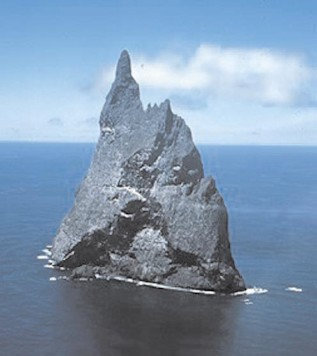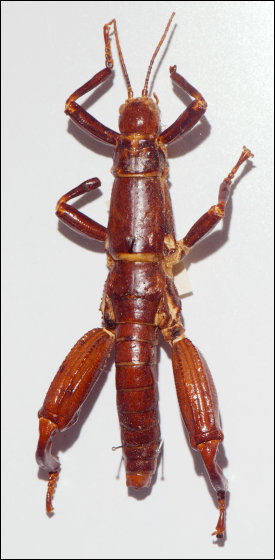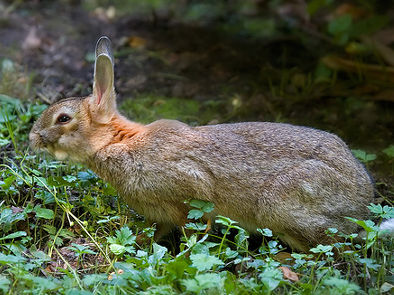Insects that should have been extinct are rediscovered on isolated islands of the ocean and successful breeding

By Patrick Honan / Nick Carlile
more,Dodo,RyokobatoMany animals are extinct, but it is the fact that there are individuals that survived and rediscovered,A case of Funaka Kunimasu involving fisheriesIt is slightly like.
One such precious case is an isolated island in Australia,Balls pyramidAtLordhauannafushiIt is rediscovery.
※ Insect pictures will appear in the article, so please be careful if you are not good at it.
Six-Legged Giant Finds Secret Hideaway, Hides For 80 Years: Krulwich Wonders ...: NPR
600 km east of the mainland of AustraliaLord Howe Islandthere is. There are steep mountains made by erosion of coral reefs and sea water on this island, and there is also a unique ecosystem, so UNESCO World Heritage (Natural Heritage) "Lord Howe Island Group"It is registered as.
Until the beginning of the 20th century, Lord Howe Island had inhabited a huge annual fish called "Lord Hau Nanafushi" with a body length of about 12 cm. A visitor from Europe was surprised and called this "wooden lobster", and this local insect was also used as a fisherman.
In 1918, British supply ship Makambo stranded in the sea near Lord Howe Island. One passenger drowned and the other passengers spent nine days on Lord Howe Island until the ship was fixed. At that time, the rat Rattlebird, who was on the ship, landed on the island, and naenafushi was predated as a good food, and in 1920 no longer seemed to be seen.
In the 1960s there was a group who went for rock climbing to the Balls pyramid in the southeast of Lord Howe Island.
View Larger Map
The Balls pyramid is a rugged island which is so steep that a big shadow is on the south even if it looks on Google Maps, as if the tip of the rocky mounts on the ocean.

ByNational Geospatial-Intelligence Agency
The climbers found the carcass of Roadhouse Nana Fushi that was supposed to have been extinct, that also recently died is rolling. However, there were also naive fish nights, so I do not have the thing to come looking for insects on such a steep island in the evening, and I could not find a living individual for a long time.
Australian scientists David Priddel and Nicholas Carlile visited the Balls pyramid with two assistants early in 2001. Those who looked up at the island from the sea confirmed that the plants that could be habitat could be harvested and landed on the island. Mr. Carlile later said that the landing itself was too difficult and Mr. Carlile later said, "I think swimming was quicker, but there were plenty of sharks," he says.
It was crickets they found that climb up a vertical cliff over 500 feet (about 150 m). They were unable to find anything special but they came down the cliffs, but on the way there was a family of PhaeomomonidaeMelaleucaI found that the plant is growing and found a huge recently huge insects beneath it. Scientists interested in where this came from decided to observe at night. Finally, I found a huge blackish insect.

By Peter Halasz
Twenty-four falcons they found were total. When I first saw this sight, Mr. Carlile said he felt "It seems that insects seemed to have returned to Jurassic when they dominate the world." Later on, it was confirmed that these are Dryococelus australis (Lord Hau Nanafushi). As a result of repeated investigations the next day and two years later, it was confirmed that these are no longer living only in the Balls pyramid. It is not specific how exactly how Roadhouse Nanafushi moved to the Balls pyramid across the ocean, whether the birds carried, fishermen, or some kind of plant.
The Australian Government decided to protect Lord Hou Nanafushi. In February 2003 I caught two pairs of mice, one pair to Sydney insect breeder familiar with rice stems, one pair was brought to Melbourne Zoo. Although two animals passed to the insect breeder died in about two weeks, "Adam" and "Eve" passed to the Melbourne Zoo succeeded in oviposition by wise efforts by Mr. Patrick Honan. In 2008 we were able to increase it to 700 naughty fish and 11,376 eggs.

By Patrick Honan / Nick Carlile
This is a movie of Lord Hou Nanafushi taking a picture of hatching.
Lord Howe Island Stick Insect hatching on Vimeo
It is not decided whether to return this Lord Hau Nanafushi to Lord Howe Island in the future, but if it returns, thorough extermination of the rat of the natural enemy and cooperation of the people of the island become necessary.
Stopping the extinction and hopefully not yet, from now on, what will be done to return to the original environment, what to do so as not to extinct again when returning, the problem is not exhausted yet.
Related Posts:







